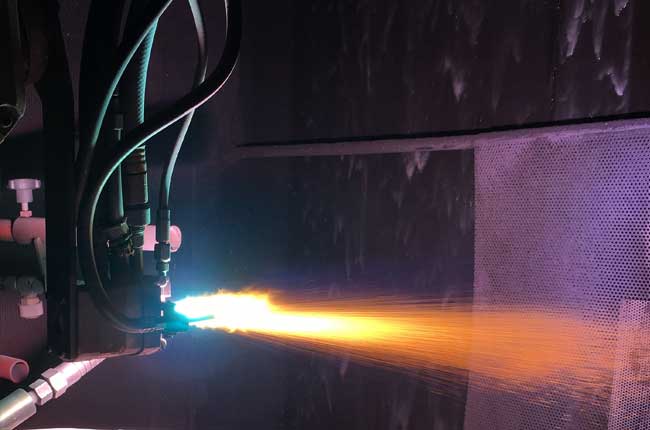
The plasma process has evolved over the years into a highly flexible coatings system capable of applying a wide range of materials. These include most metals/alloys, ceramics, cermets and composites.
Main Applications
Main Industries served:
- Aerospace
- Energy / power generation
- Automotive
- Petrochemical
- Mining
- Textile
Plasma Process Description
An inert gas (typically Argon), when excited by an electric arc, becomes partially ionised and in this state is able to carry an electric current. This generates a hot gas stream having temperatures of approximately 15,000°C.
Powder material is then injected into the heat source at optimum conditions and projected in a semi-molten (plastic) state onto a suitably prepared work piece to form high integrity coatings of typically 0.05 mm to 4 mm in thickness (depending on the type of coating).
The gun is manipulated by hand or by using a robot, enabling a wide range of component configurations to be coated.
Typical Applications Include
- Abrasion
- Fretting (non-intended motion)
- Sliding wear (hot and cold)
- Particle erosion
- Hot gas erosion
- Corrosive atmospheres (gaseous or liquid)
- Low and high friction applications
- Thermal barrier coatings
- Free standing shapes
- Biological environments (medical implants)
General Coating Characteristics
- High bond strength
- High density, low porosity
- Can be ground or lapped to a fine finish
Due to the range of materials that can be sprayed, it is difficult to generalise on coating characteristics but with the correct choice of material, plasma coatings can:-
- perform better than chrome plating
- be more cost effective than solid sintered carbide
- resist wear better than the same material in cast or wrought form
Available Coatings
- Tungsten Carbide / Cobalt (83/17)
- Chrome Oxide
- Yttria stabilised Zirconia
- Nickel/Chromium (80/20) + 6% Aluminium
- Cobalt / Chromium / Nickel / Tungsten
- Aluminium / Polyester
- Chromium Carbide
- Nickel Aluminium
- Aluminium Oxide
- Magnesium Zirconate
- Copper Nickel Indium Alloy
- Molybdenum Aluminium Composite
- Aluminium Graphite Composite
- Nickel Graphite Composite
- Aluminium Silicon – Boron Nitride Composite
- Cobalt Nickel Chromium Aluminium Yttria Alloy


